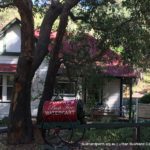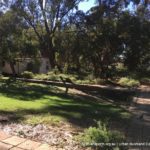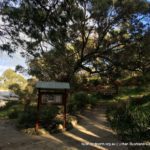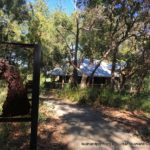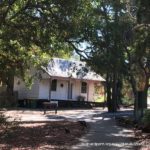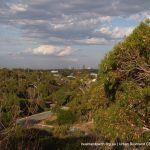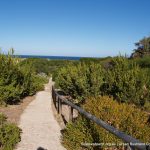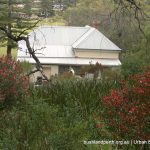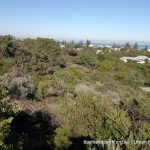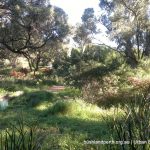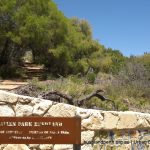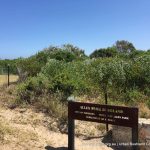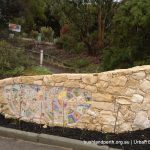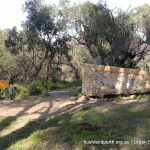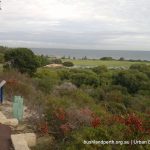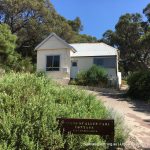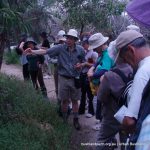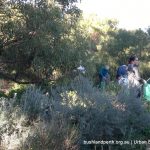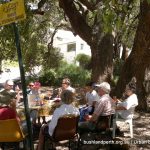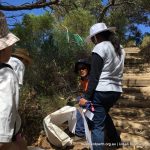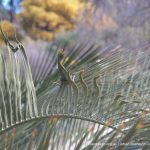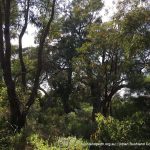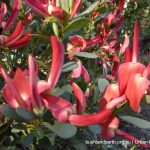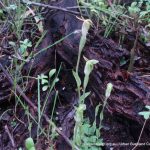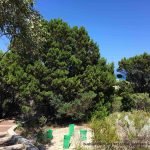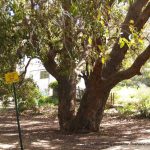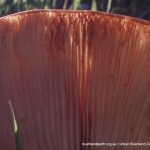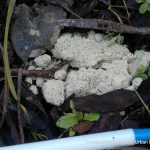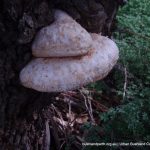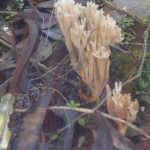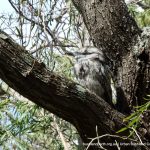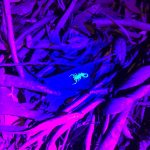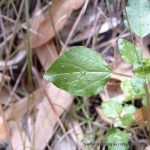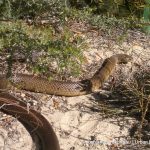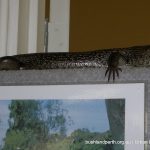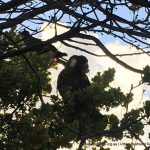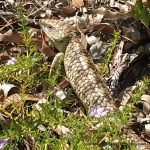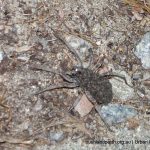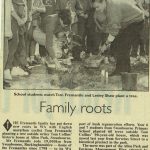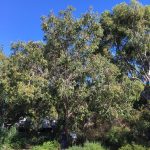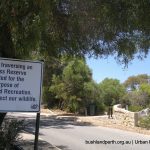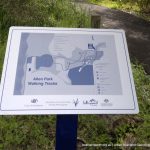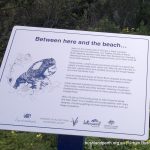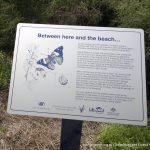Melon Hill Bushland Group (formerly Friends of Allen Park Bushland Group)
Keeping you up to date
Important update about the 2024 Nedlands Budget (update 3) here
We are thrilled to announce that following a very positive meeting with Mayor Argyle on 14 October (see Update 2) and several months of discussion, the City of Nedlands has voted unanimously to restore the Environmental Conservation Budget to its 2023/2024 level. This will preserve biodiversity, mitigate bushfire risk, increase our climate resilience and ensure that the work that has gone into these essential natural assets over many years is not wasted. We are very grateful for the environmental and climate leadership shown by the City of Nedlands, and to the Urban Bushland Council for their support. A full recording of the City of Nedlands Agenda Meeting of 22 October can be found on the Nedlands website. The Bushcare Maintenance Item is 21.2 – scroll to 1.19.10 of the recording.
Key contacts: Send us an email at [email protected] or Phone Lesley 93847983 or Judy 0428294876
Find us here on Instagram.
Upcoming events
- November 2nd Night Walk Insect Study Society (8:00 – 9:30 pm). Meet in the Heritage Precinct, off Kirkwood Road. Parking in Clare Copse. Limited to 20 people. Register early.
- November 22nd Nov @ 6.30pm Guest speaker TBA on Carnaby’s Cockatoos
- December 7th Nov 8-10am Watering and Bush brekkie
Latest newsletter is here
____________________________________________________________________
Our history
 Note: The Friends of Allen Park Bushland Group Inc in Swanbourne have changed their name. We are still the same group of people but have elected to change our name to Melon Hill Bushland Group Inc. This has come about because the umbrella group, Friends of Allen Park (FOAP) has often been confused with the bushland group because of similarities in names. FOAP is an informal community group that formed in 1993 following a court injunction that overturned an over 55’s development proposal on an area of bushland in Allen Park. This was an awakening for the community; the bushland didn’t have a voice or the recognition it deserved. In 1996, the first management plan rolled out and the Friends of Allen Park Bushland Group was formed to play an important role in conserving and connecting bushland remnants in the Allen Park region, working together with the City of Nedlands conservation officers.
Note: The Friends of Allen Park Bushland Group Inc in Swanbourne have changed their name. We are still the same group of people but have elected to change our name to Melon Hill Bushland Group Inc. This has come about because the umbrella group, Friends of Allen Park (FOAP) has often been confused with the bushland group because of similarities in names. FOAP is an informal community group that formed in 1993 following a court injunction that overturned an over 55’s development proposal on an area of bushland in Allen Park. This was an awakening for the community; the bushland didn’t have a voice or the recognition it deserved. In 1996, the first management plan rolled out and the Friends of Allen Park Bushland Group was formed to play an important role in conserving and connecting bushland remnants in the Allen Park region, working together with the City of Nedlands conservation officers.
Because our focus is on conserving and enhancing the bushland, we sometimes hold different positions on issues from the Friends of Allen Park group and this has caused understandable confusion in the community, the media, our councillors and some official bodies. Friends of Allen Park continues to advocate for our community in Swanbourne canvassing and representing opinion among residents of the Allen Park area on a wide range of issues.
So to clarify our purpose and separate identity we have formally changed our name to the Melon Hill Bushland Group Inc.
Why did we choose the name Melon Hill Bushland Group? Those who frequent the Swanbourne area may have walked through the bushland behind Swanbourne Beach, over the crest of a large dune that locals fondly call Melon Hill. As one of our cherished members, and Fellowship of Australia writer Peter Bibby quotes so eloquently, “This hill is beautiful. It is the jewel in the crown of Allen Park. ….the great view from here is the uninterrupted sweep from such an elevated position down to the glory of the Indian Ocean to the west and a very clear Rottnest Island”. This dune stands around 40m above sea level and also affords views to the City, and beyond.
In researching the area, it was found that the hill was named around 1927, much earlier than imagined. We as custodians now aim to have the hill named more formally.
…………………………………………………………………………………………………………………………………………………………..
Did you know that a retirement village was to have been developed on what locals call ‘The Walkway’, back in 1994?
It took a band of tenacious Swannie residents a year and a half to halt the process and win back the Tuarts and Marris that stand so magnificently on the Walkway today.
Allen Park
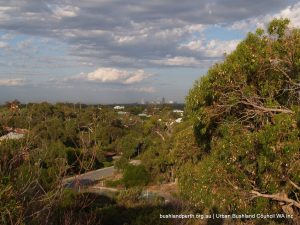
Allen Park is located in Swanbourne, in Perth’s western suburbs. The Allen Park bushland comprises approximately 8 hectares, some 40% of the Park’s total area. The entire park is within 1km of the Indian ocean and stretches inland from the coastal foredunes, through coastal heath and open tuart-peppermint woodland to the eastern fringe including Jarrah and large Marri trees some hundred years old. The dominant landscape feature of the park is Melon Hill, a 40m high dune with magnificent 360 degree views including Rottnest Island and the city of Perth.
Until 1991, Melon Hill was utilised as part of the coastal defence system. A concrete pillbox installation was removed and the area became reserved for public purposes, but remains Commonwealth land under management by the Department of Defence.
The Allen Park bushland provides linkages and corridors to adjacent and nearby bushland. BushForever site 315 is a critical link between the extensive coastal reserve and Melon Hill. Successive years of funding by NHT between 1997 and 2001 ensured that degraded areas were revegetated to secure linkages between fragmented areas of Allen Park.
Allen Park supports a variety of creatures – possums, bats, reptiles, fungi and Banksia sesslis, the big Tuarts, red Cocky’s Tongues and yellow acacias are sanctuary to wrens, honey-eaters, migratory Rainbow bee-eaters, 28s and a popular stop over for endangered Carnaby’s cockatoos. Birds of prey enjoy the elevated vista and include Brown Goshawks, Black-shouldered Kites, occasional Peregrine Falcons and Barn Owls. Tawny frogmouths favour the peppermints and Boobook Owls nest in old-world Tuarts and Marris.
Allen Park Heritage Precinct
Those who have visited Allen Park will know that there’s an olde-world charm about the group of buildings associated with the history of coastal living. The Fellowship of Australian Writers’ two cottages: Tom Collins House, Mattie Furphy’s House as well as Tom Fricker Cottage and the Allen Park cottage are nestled below Melon Hill in a woodland setting that affords quiet enjoyment and contemplation. Giant Marris, Tuarts and Jarrah surround the precinct and a little amphitheatre “The Hollow” is well loved.
Allen Park Views
Allen Park entry Points
About Us
Our aim is to preserve this special pocket of coastal bushland in a city where urban remnant bushland is under increasing threat from urban expansion. We work to regenerate degraded areas, control erosion, remove exotic species, and protect wildlife by improving the habitat for fauna, flora and fungi. We also want to share our experiences, and encourage people to join us in our endeavours.
Contact Details
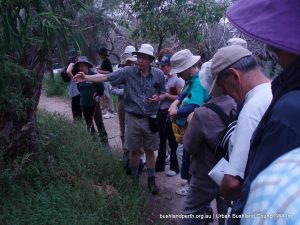
Melon Hill Bushland Group meets on Tuesday mornings, 9-11am, and the first Saturday of the month between March and December for hands-on bush regeneration within the Allen Park bushland reserve. A watering roster continues right through summer into autumn.
The MHBG is a friendly bunch of people who don’t mind getting their hands dirty. We meet for a couple of hours of work in the bush before a morning tea.
It’s a lot of fun and you meet more people in the community. You get such a sense of belonging to the bushland when you have made a small contribution to caring for it. Many people hesitate to put up their hands as they think they will be asked to commit to a lot of work. But even the smallest amount of support is good. Even if you just join up (membership $15 / family) and don’t ever come to the work days but just get the newsletter and show your interest, that’s fine.
We’re also on Instagram.
Send us an email at [email protected]
Phone Lesley 0431 728 230 or Judy 0428294876
Calendar 2025
Bushcare resumes every Tuesday from March 8-10am, then from April to October 9-11am.
Saturday 8 March, 8-10am, watering seedlings.
Sunday April 6th 9-11am TBA.
Bushcare every Tuesday 9-11am.
Sunday May 4th 8am Guided bird walk with Ian Abbott.
May 20th 9am planting banksias.
Sunday May 25th planting banksias.
Sunday June 8th 9am to midday Planting on Odern Crescent.
Planting every Tuesday 9-11am.
Saturday July 5th 9- 11am Planting, watering.
Saturday August 2nd or Sunday 3rd (TBA) 9 – 11am Fungi Foray with Roz Hart.
Saturday September 6th 9-11am Guided Wildflower walk.
Saturday October 4th 9-11am Weeding.
Saturday November 1st Night walk Insect Study with WAISS.
Friday November 21st AGM. TBA.
Saturday December 6th 8-10am End of year bushcare and bush brekkie.
Watering seedlings every fortnight.
Cottage Restoration
The City granted use of the Allen Park cottage as a base for the bushland group given that the volunteers provide a considerable service to the community. The cottage served the community well and was vacated in July 2021, when it was announced that restoration works were imminent.
The cottage was built in 1913 and is a wonderful community asset though in need of repair. Fortunately, an 11th hour amendment to a recommendation before Council averted demolition of the cottage. A Heritage Architect has been engaged to report on the building and its back to the drawing board. There is urgency in finding additional funds to shore up the building and bring it back to its former glory.
Newsletters
Without people who care, this local treasure would have already been lost forever to commercial development. Read on…..
2024 Kambarang and Nedlands Budget Update 3
Recent Updates
Perth’s Children’s Hospice
A development proposal has been lodged with the SDAU to build a Children’s Hospice on the old bowling greens at Allen Park. The excision of 5000 square metres from the A Class Reserve was made to pave the way for a 7 bed hospice for children with life-limiting health conditions. The community has grave concerns for the safety of its patients and staff once it is built as it lies in close proximity of the bushland deemed BAL FZ by DFES. View the application on line at www.consultation.dplh.wa.gov.au
Sayer Street closure
Historic moment for Allen Park – the road traversing A Class reserve was closed at the end of July 2016, with a boom gate placed in position across Sayer Street. Although it remains an access route for emergency services, it is now a safe passage for park users as well as bobtails and variegated fairywrens, which flit busily across into the Boobook Sector at the north eastern end of Allen Park.
History
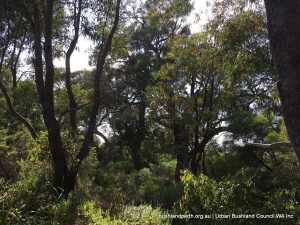
The Friends of Allen Park community group emerged as a result of a crisis. Early December 1993, 5 residents adjoining the walkway/ cycleway (between Wood Street bend and Sayer Street) received a letter from the council giving preliminary notice about a proposed development of the site.
A week later a councillor showed plans of 2 different concepts to these people. A public meeting was called on the 13th December, with 44 people attending (and 10 apologies). On the 22nd December, a petition was signed on the walkway, requesting that the council did not proceed any further until a special electors meeting was held.
The meeting was held on 24th January 1994 and 50 people attended. Submissions to preserve the walkway were received.
Consultative Committee
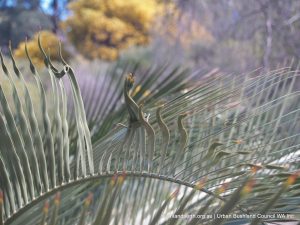
At this point a residents’ consultative committee was formed, which then became the Friends of Allen Park (FOAP). The purpose of the group was to establish a community view of the use of public land in the Allen Park vicinity, and to promote genuine consultation about current land use and issues between the community and the council. The FOAP sought amendment to the Town Planning Scheme as the use of the walkway was so apparent that it ought to have been included into the Parks and Recreation Reserve, and not to be developed as a “retirement village” for the over 55’s.
Although the Sayer Street site was designated in 1977 as a crown grant for the purpose of homes for the aged, it had not been used for that purpose within a reasonable time frame. This scheme did not meet the criteria.
Over the next 10 months the FOAP and council were at loggerheads. Dissatisfaction with council over its intent to proceed with the proposed $14.5 million development, regardless of community concern, the FOAP grew in numbers. It also became apparent that a few Councillors had a vested interest in the project, and that a deal had been made – a management agency had been appointed without going through the tender process. This led to a meeting with Paul Omodei, the Minister for Local Government to express concern that all aspects of the process were dubious. The Minister later requested the council needed majority approval of ratepayers (citywide) to go ahead with plans for development. A solicitor was engaged by some locals to investigate and expose the flawed administration by the council. On the 22nd December 1994, a Supreme Court injunction was granted against council preventing an agreement on the management of the village taking place.
Resolution
On the 23rd December, the FOAP overturned the sign on the walkway. The saga came to an end when on the 27th March 1995, Nedlands Council, by then under enormous scrutiny, collapsed due to the resignation of 7 Councillors. The Minister then appointed as an interim measure an Administrator, John Gilfellon, to undertake the duties of Council. On election of the new Council the project was thrown out. Since then the walkway has been rezoned as recreational.
In the meantime the FOAP has flourished and accomplished extensive bush regeneration work in the different sectors of Allen Park north and south of Sayer Street. Bushland activities became more formalised, and managed by what later became the FOAPBG Inc (Friends of Allen Park Bushland Group). A Management Plan was adopted in 1996 and a proportion of Allen Park was included in the National Trust of Australia (WA) List of Classified Places.

